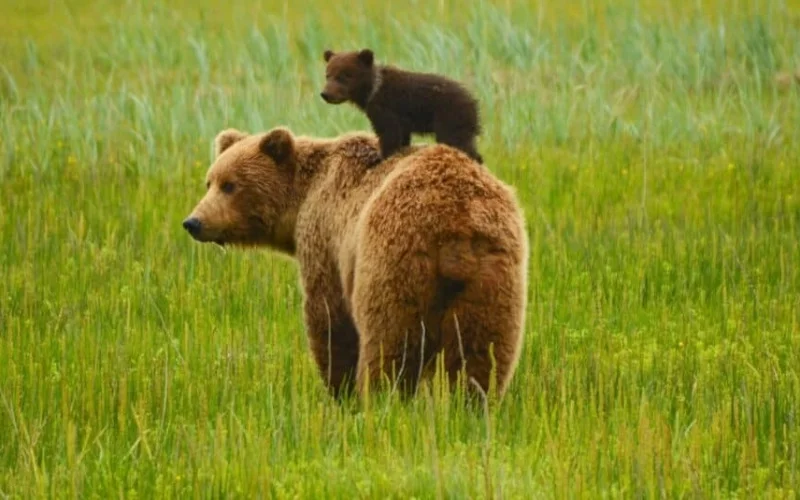One of the most feared predators in the world is the bear, and this is because they are very big and aggressive predators who spend hours in search of their “daily bread.”
These very smart animals are endowed with an amazing sense of sight, smell, and hearing with powerful claws and paws, but many have wondered if bears have tails. The answer is that bears have tails, but their tails are small, which is probably why many people notice them.
The funny thing is that their tails are not meant for driving away flies like most animals, but mostly to cover their rear. Today we welcome you to the world of bears and what makes them unique.
Species Of Bears
The bears of the world are categorized into:
1. The North American Black Bears or Spirit bears (Ursus americanus)
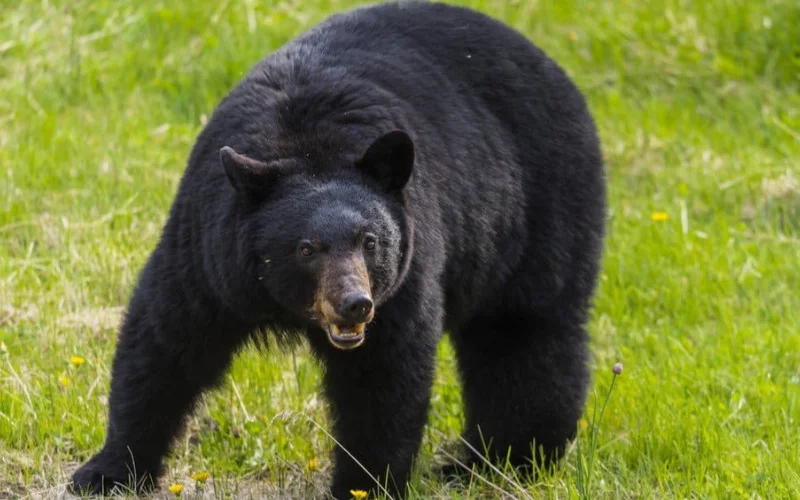
This is the most common bear in North America, especially in Florida, Alaska, and Canada. They come in black, brown, white, or bluish-black colors, but the black and brown hues are the most common. They are omnivores that feed mostly on plant matter.
The male and female enter sexual maturity at 7 and 8, respectively. The make can weigh as much as 280kg. The tails of these bears are small and quite difficult to spot, and the fact that their colors are usually black does not help matters.
Typically their tails range between 3 and 5 inches long. It helps them mark their territory with their scents while keeping some very sensitive parts of their bodies free from insects and dirt.
2. Brown Bears (Ursus Arctos)
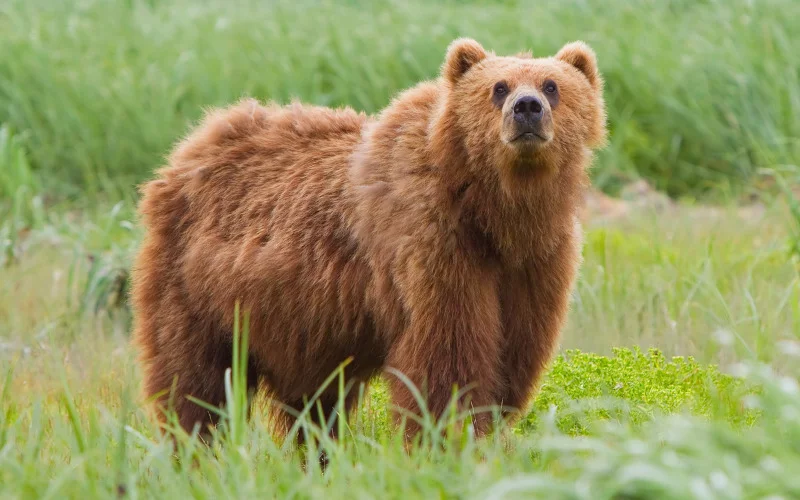
Brown bears are also found in Alaska, Washington, Wyoming, Montana, and the western part of Canada. Some of them are found in a small population in Asia and Europe, with a sizeable population in Russia.
Their color ranges from light brown, brown, and blond to black. Some brown bears weigh up to 700 kg, but they are quite rare now.
The brown bear’s tail is small compared to its body weight and length. The tail is usually 2.5 to 8.6 inches in length, and they use these tails for spreading their scent onto surfaces.
3. Polar Bears (Ursus maritimus)
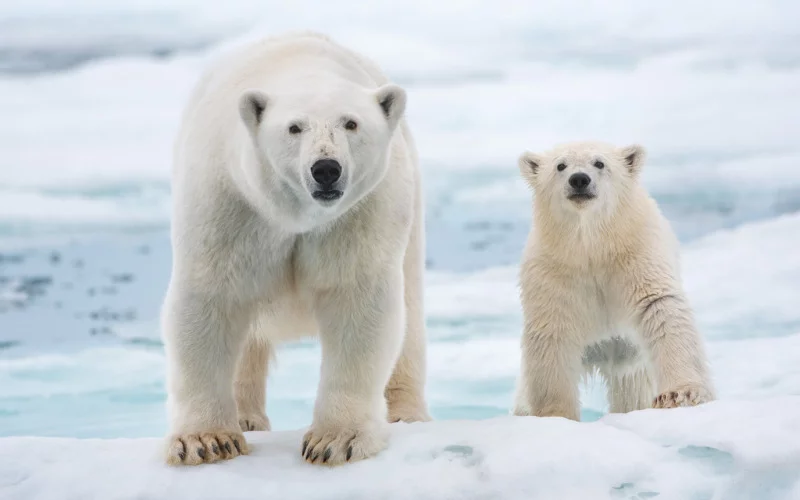
These are some of the largest bears in the world. Some adult males can weigh as much as 800kg. Even though the females are much smaller, some weigh just 300kg. They are mostly found in Canada, Norway, Alaska, and Russia.
The polar bears have very small tails, especially when you compare them with other wildlife species. Their tails are 3 to 5 inches long, but you might not easily spot this tail because the area is covered with long fur that is quite thick.
Because of the number of blood vessels and the fact that the tail of the polar bear has, it helps to protect this animal from cold.
Unlike most mammals that are strong swimmers whose tails assist them in swimming, the tail of polar bears plays no part in their ability to swim; rather, their large paws and muscular legs help them swim.
4. Asiatic Black Bears (Ursus thibetanus )
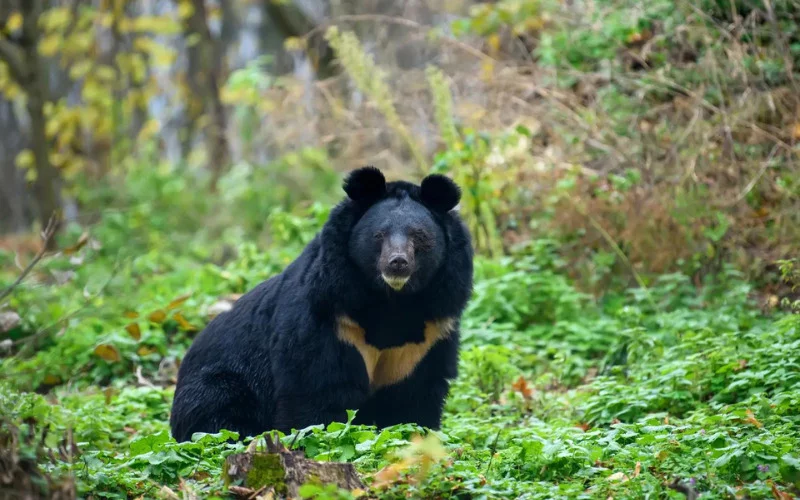
These bears have long black fur with a distinctive patch on the chest shaped like a crescent. Their ears are large, and the fur around their throat and shoulder is long. They are found in most East Asian countries like Bangladesh, Afghanistan, Japan, Nepal, and the rest.
Even though these bears are omnivores, they prefer feeding on animals like birds, fish, carcasses, and mollusks. They also feed on berries, seeds, fruit insects, and honey. They hibernate in northern climates but not in the southern climate.
5. Andean Bears or Spectacled Bears (Tremarctos ornatus)
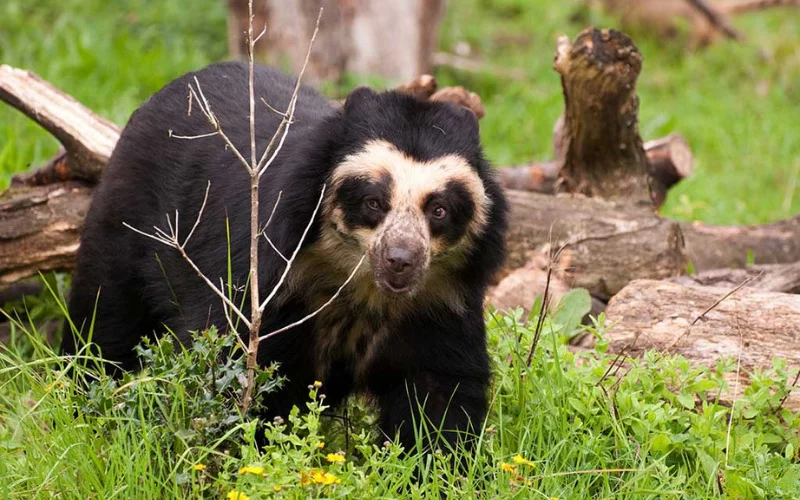
These bears are found only in the Andes mountains in South America and are the last Species of the Tremarctinae subfamily. They are considered vulnerable and endangered, so killing them is unlawful.
They are very large bears, and their diet is 5% meat. They are either dark brown or black and have distinctive beige-colored markings across their face and upper chest, though not all Spectacled bears have “spectacle” markings. The males are sometimes twice bigger as the females.
6. Panda Bears (Ailuropoda melanoleuca)
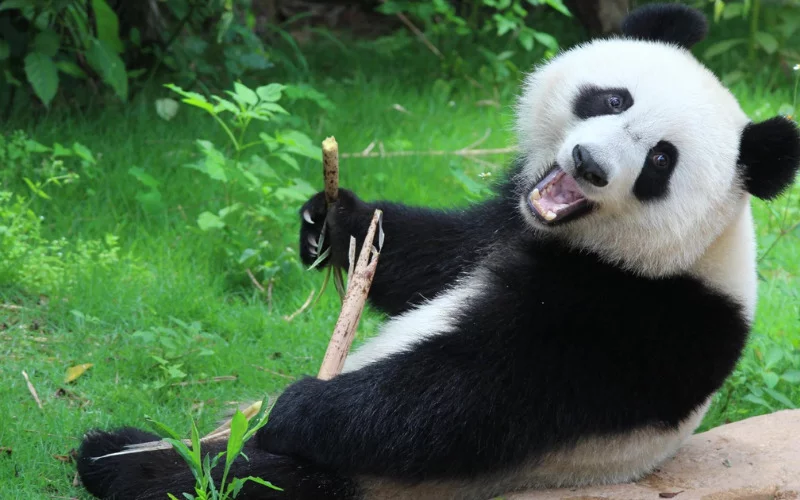
Panda bears are usually 5 feet long, 113kg heavy for males, and about 100kg for females. There is the bamboo-loving giant panda which is almost extinct because they are rare and endangered; that has an extra digit on its hand for tearing bamboo.
Giant pandas were born very small, hairless, pink, and blind, and today, they are restricted to six separate mountain ranges in western China. Panda bears do not hibernate in winter; they move to lower elevations to keep warm.
The pandas’ tail is longer than most bear species. Their tails, usually white or black and white, are 4 to 6 inches long, and in their young life, it is a quarter of their body length, which gradually reduces to one-tenth of their body length when they are fully matured.
The tail of the panda bear is also used for scent marking, especially during mating season, and also for showing dominance, and these scents are produced from various glands in the tail
7. Sloth Bears (Melursus ursinus or Ursus ursinus)
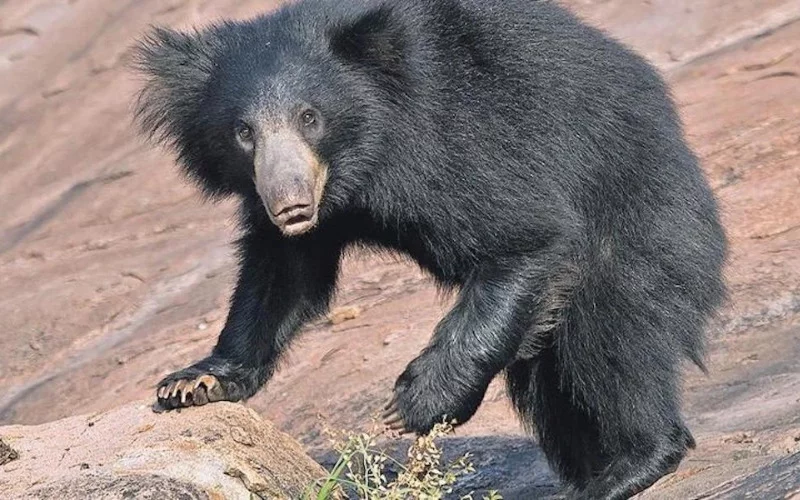
These bears, which are relatively smaller than other bears, have shaggy hair and a white U or Y-shaped marking on the chest. They have long tongues and well-developed claws with which they climb trees for termites.
They can be heard from a long distance sucking up termites. They have a pale muzzle and large lips, commonly found in Nepal, Bangladesh, Bhutan, and Sri Lanka.
The Asian sloth bear has the longest tail, measuring around 5.9 to 7 inches long. In contrast to their small tails, these bears can grow up to 6 feet tall. These bears are nocturnal, and they do not hibernate.
8. Sun Bears (Ursus malayanus)
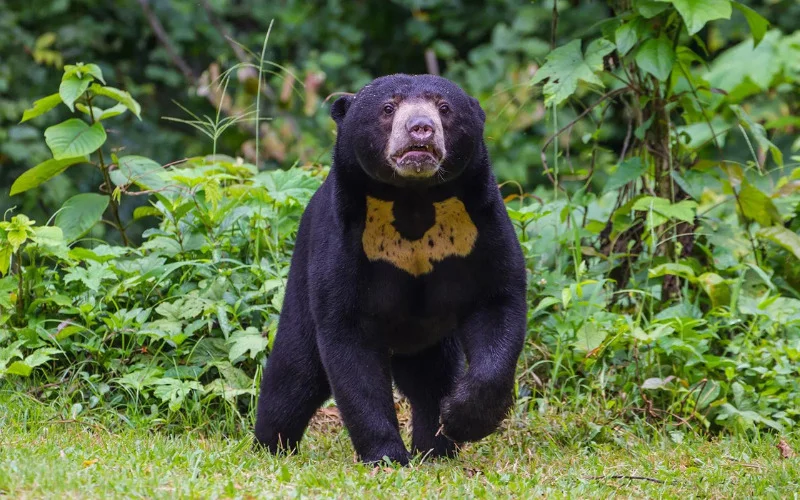
These are the smallest bear species, and the male and female weigh about 50kg and 65kg, respectively. They have short black water-repellent fur and a yellow crescent on the chest. They have long to guess, strong paws, and naked soles.
They have very big canines that they use to tear meat and trees and get insects. They are found in southeast Asian countries of India, China, Myanmar, Malaysia, and others.
We Didn’t Mention Koala Bear
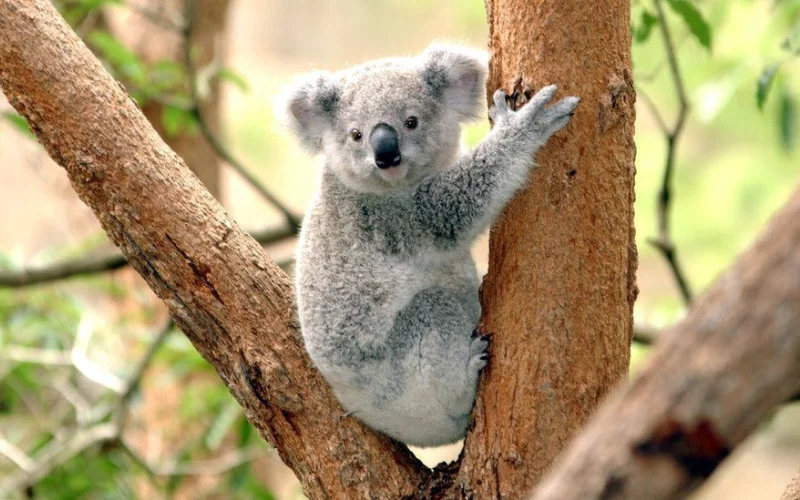
Many of you might think we forgot to mention the koala bear in the species of bears of the world, but the truth is that koalas are not exactly as bears as we all believe. Koalas (Phascolarctos cinereus) are marsupials, and their close relatives are the kangaroos.
Koalas do not have a pronounced tail; whatever they have as tails are internal, and we know this only because their skeleton structure shows signs of a tail.
Do Bears Have Tails?
Affirmative bears have tails, but they are rather very short and compact vestigial tails which could be as long as 8.6 inches or even shorter than 2.4 inches, depending on the species of the bear.
But the astounding fact is that bears do not act like they have tails because it does not play a significant role in their way of life.
The main function of the tails in bears is to cover their rear end and also protect them from parasite attack and also from cold, and this is because that part of their bodies are not covered in fur and so are susceptible to attack from parasites and the weather, hence the tails covers and protect that part.
Different animals have pronounced tails which they use for many purposes. For instance, most animals like cattle use their tails to get rid of insects, dirt, and flies, and arboreal animals use their very strong tails to grasp tree branches.
To create thrust underwater, fish their caudal fin and tail, which helps them swim better; others, like kangaroos, gain balance with their tail while jumping.
While the tails of the best species do not perform any significant function like those of other animals, some species use their tails to spread their scent.
This is their way of communicating and keeping track of each other, especially during their mating season, because they mark their territory as they search for mates.
Fun Facts about Bear
Here are some interesting facts about this big furry creature:
1. There are 8 main bear species worldwide, but they have many sub-species that vary in many ways. Some species have unique characteristics that make them adapt to their environment.
2. Bears in captivity live for up to 50 years, while those in the wild have a life span of 25 years. This is because the search for food in the wild can take a toll on the bear’s life span, unlike that of a bear in captivity which ordinarily is well cared for.
3. Most bears hibernate for up to 100 days during winter, where they sleep as their body fat give them insulation against extremely cold temperature.
4. Some bears can weigh as much as 700kg, and some weigh 50kg too, depending on the specie.
5. Some bears are 3 meters tall when they stand.
6. They are omnivores, feeding different plants like bamboo, animals, insects, and the like, but most of them love to eat meat more.
7. Bears walk very slowly at a speed of 1 meter per second, which is lower than that of humans, which is 1.4 meters per second.
8. There are just about 200,000 brown bears globally, mostly found in Russia, Alaska, and Canada.
9. Brown bears live solitary lives, except when they seek a mate.
10. At birth, bear cubs, are naked and blind; later, their eyes open, and they develop the fur that covers them.
11. Bear in the wild spend as much as 16 hours in search of food because they are voracious eater, and they can walk a long distance in search of meals
12. They can smell food from a few kilometers away and meticulously follow the scent until they get to the food source.
13. Brown bears found in the wild are more agile at night.
14. The largest predator that lives in the European content is the brown bear.
16. The brown bear is the national symbol and animal of Finland.
17. Bear are very intelligent animals who care very well for their families. They can also use tools and stuff around them to search for food. They are considered one of the smartest land animals that there are.
18. Bears are not cuddly as depicted by many stuffed counterparts around us or the movies made around them in which they are portrayed as gentle. Bears rather are very strong and aggressive.
Conclusion
Yes, bears have a tail, but not the long ones that you find in other animals that they use for chasing insects away, keeping dirt off, and even maintaining balance and swimming.
Instead, they are relatively small vestigial tails that look almost non-existent. They use mostly for spraying their scents around their territory as a sign of dominance or to lure mates during the breeding season.
You May Also Like:
- Can I Shoot a Possum in My Backyard
- How Far Can Raccoons Jump
- What Sorts of Food Does Backyard Lizard Eat?
- Can You Eat Squirrel From Your Backyard
- Do Skunks Climb Trees or Fences?
We trust this article helped you learn more about bears. You may also want to check out How to Stop Foxes from Jumping Fences.
Thanks for taking the time to read our article, and we hope you find it helpful. Would you mind leaving a comment below if you have any suggestions?
Kindly reach out to people by sharing this post on social media.
If you liked this article, then please follow us on Facebook, Instagram, and Pinterest.

